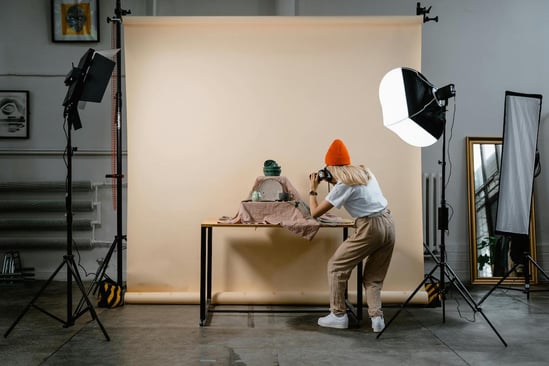How To Preserve Image Quality For Richer Product Images

If a picture is worth 1,000 words, then a high-quality product image is worth at least a few from consumers: “I want that.”
According to Salsify’s “2024 Consumer Research” report, 78% of shoppers find product images extremely or very important when purchasing products online. And 76% of shoppers are driven to click on a product page from search if they see high-quality images.
Follow these best practice recommendations for your product images to drive sales and increase conversions.
What’s a Lossy Format vs. Lossless Format?
There are two main buckets of digital assets (and most digital media): lossy formats and lossless formats. What are they, and what’s the difference?
- Lossy format: This is the web format (i.e., JPG and GIF). A lossy format compromises the integrity of files to achieve a smaller file size. For example, they allow a full page of images to load quickly, but more compression results in poorer quality.
- Lossless format: This is the archival format (i.e., TIFF and EPS). A lossless format will always retain the original quality and can be transformed any number of times while retaining quality. Think of a recording artist’s master tape.
You need your files and pages to load quickly, but you also need to preserve quality. The more you compress your files to increase loading speeds, the more quality you sacrifice.
To make matters worse, if you compress an already compressed image you’re compounding the problem and losing quality even faster.
Why Preserving Image Quality Is Challenging (And What To Do About It)
You may have high-quality digital assets of your products taken by members of your creative team or other agencies. However, you likely accept or save these images in a lossy format.
By the time a retailer publishes your assets online, they may have been compressed consecutive times, losing quality with each pass.
This means that consumers are seeing less-than-ideal versions of your product images, which may turn them off enough that they don’t convert.
How Lossy Happens
Think about the last family portrait you printed, maybe to use in your holiday cards. Naturally, you want to create more copies of this image to send out. Instead of printing another original from your computer or mobile device, say you used a photocopier to create a copy.
Thereafter, you made more copies from each successive copy. But each time you make a new copy, you’re “adding compression” or losing fine details, resulting in a low-quality image that looks grainy, less crisp, and pixelated.
Unfortunately, many brands try syndicating low-quality images, often JPG files that are already compressed. Then, they often compress these images further — intentionally or inadvertently — to satisfy the file size requirements to reach their retailers.
According to Salsify research, 45% of consumers will abandon a sale due to no or low-quality product images or videos. Share a low-quality image, consumers are fair to assume a low-quality product.
How To Avoid Lossy-ness
The best digital asset strategies start with high-quality media. Request uncompressed formats from your agency or invest in high-quality reshoots from your creative department. Here’s an example of large, high-quality images of a jacket from The North Face.
Image Source: The North Face
Additionally, when wrangling user-generated content (UGC) to share, choose examples that show your products clearly in their best (but authentic) lighting. Forty percent of shoppers shared that UGC keeps them engaged on a product page, per Salsify research.
Modern product experience management (PXM) solutions can store lossless media for you, as well as help with dots-per-inch (DPI) modification, resizing, colorizing, padding, cropping, adding overlays, and more in bulk.
Work More With Lossless, Lose Less
Working from lossless formats and preserving image quality can prevent unnecessary compression. Beautiful, clear product images ensure your products stand out instantly against the competition and inspire “the buy.”
10 Essential Product Page Best Practices
Download this guide for the best product page practices to implement ASAP plus landing page examples from top brands to use as inspiration.
DOWNLOAD NOWWritten by: Yvonne Bertovich
Yvonne Bertovich (she/her) is an editor and writer at Salsify, reporting from Knoxville, Tennessee. With a longtime passion for research, she enjoys flexing her perspective on ecommerce, trends in consumer behavior, and health and wellness.
Recent Posts
Ecommerce Marketing
|
12 minute read
The Art of the Impulse Buy: 70% of Shoppers Say Discounts Drive Unplanned Purchases — Here’s Why
Read More
Ecommerce Marketing
|
10 minute read
What Does It Take To Have a Good Brand Reputation in 2025?
Read More
Ecommerce Trends
|
11 minute read
What Is Commerce Media — and How Can It Optimize Your Marketing Spend?
Read More
Subscribe to the Below the Fold Newsletter
Standing out on the digital shelf starts with access to the latest industry content. Subscribe to Below the Fold, our monthly content newsletter, and join other commerce leaders.

.svg)